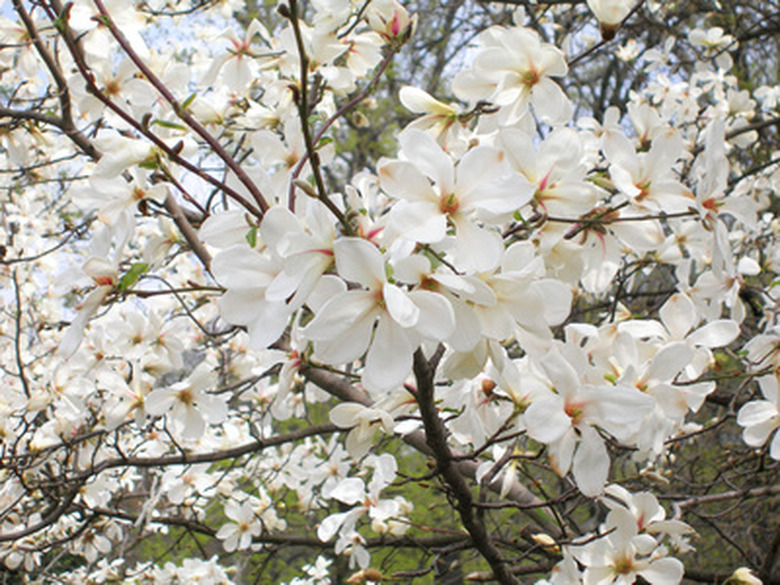How To Care For A Chinese Magnolia Tree
Things Needed
- Watering tool
- Organic mulch
- Pruning tools
- Insecticidal oil
The Chinese magnolia tree (Magnolia x soulangiana) is a deciduous, flowering tree. A hybrid of Magnolia heptapeta and Magnolia quinquepeta, the tree is desirable for its huge, plate-shaped flowers. Also called the Japanese or saucer magnolia, this spring-blooming tree can reach a height and width of 25 feet, according to North Carolina State University. Care of these adaptable, easy-to-grow trees does not go beyond basic cultural practices, making them a terrific choice for beginning home gardeners who want a beautiful specimen or shade tree.
Step 1
Plant your tree where it will get at least six hours of sunlight per day. The more sunlight, the better the trees will grow. Chinese magnolia trees will tolerate partial shade, but grow somewhat "leggy" or spread-out, according to the University of Florida.
- The Chinese magnolia tree (Magnolia x soulangiana) is a deciduous, flowering tree.
- A hybrid of Magnolia heptapeta and Magnolia quinquepeta, the tree is desirable for its huge, plate-shaped flowers.
Step 2
Water enough so that the soil is continually moist, but never soggy. This tree is adaptable to a wide range of soil conditions, except for very wet soil. Standing water will quickly rot the magnolia's roots.
Step 3
Mulch your Chinese magnolia tree in the spring with organic mulch. Extend a 2- to 4-inch layer of the mulch out to the edges of the tree's canopy. These trees thrive in rich, loamy soil, and the mulch will help the soil retain moisture and prevent weed growth, in addition to adding nutrients.
Step 4
Prune the lower branches of the tree if you need access for pedestrians. This tree spreads and has long, drooping branches that can dip to the ground. The best time to do this is when flowering is done. If you like the drooping branches, remove only the branches that are damaged.
- Water enough so that the soil is continually moist, but never soggy.
- These trees thrive in rich, loamy soil, and the mulch will help the soil retain moisture and prevent weed growth, in addition to adding nutrients.
Step 5
Monitor the tree for insect problems. While the tree is usually free of serious insect pests and fungal diseases, according to the University of Florida, it can occasionally suffer from magnolia scale. Apply an insecticidal oil in late winter to kill the overwintering scales, which cling to the twigs of the tree.
Tip
Chinese magnolia trees grow best in United States Department of Agriculture (USDA) plant hardiness zones 5 through 9A, according to the University of Florida.
Warning
Be careful when using garden tools around this tree. The silvery-gray bark is quite fragile and slow to heal from wounds.
